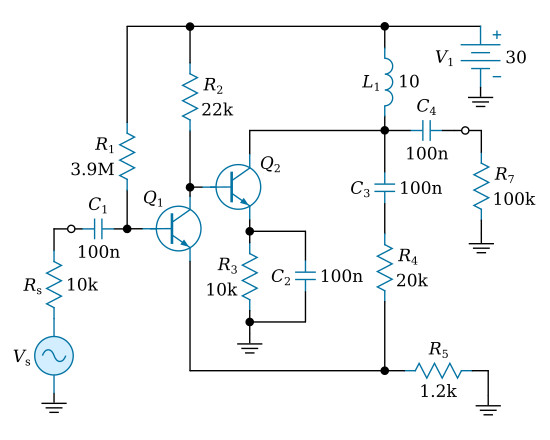Home > Textbooks > Basic Electronics > Amplifiers > Negative Feedback Examples >
Amplifiers
Negative Feedback Examples
Double-Stage Amplifiers with Negative Feedback
There are many applications wherein it is desirable to employ transistors as voltage amplifying elements. However, the characteristics of the transistor, namely its low input impedance and high output impedance, hinder its use for voltage amplification where the reverse impedance levels (high input impedance and low output impedance) are necessary.
The technique to be described in this section makes use of the following properties of negative feedback: (1) shunt (parallel) feedback reduces the impedance level, (2) series feedback raises the impedance level and (3) both increase circuit stability. By employing degenerative feedback in parallel with the output and in series with the input, the impedances required for voltage amplification are obtained. Simultaneously, the circuit is stabilized against component variation.
Two double-stage amplifiers are presented. The figure below is a diagram of the first with a finite load resistance of 10 kΩ.

The 3.9 MΩ resistor biases the first transistor. The 22 kΩ resistor serves as a collector return for the first transistor and a base return for the second. The 10 kΩ emitter resistor of the second transistor stabilizes the quiescent operating point.
The second amplifier, shown in the figure below, is similar to the first except for the "infinite" load resistance and biasing arrangement. The collector voltage of the second transistor must now be supplied through a source that does not load the output. An audio-frequency choke L1 was used for this purpose.







